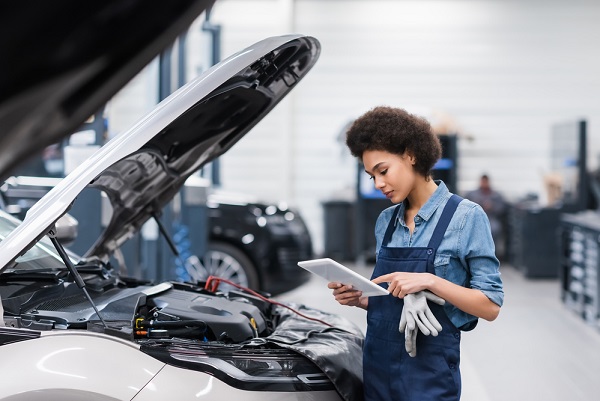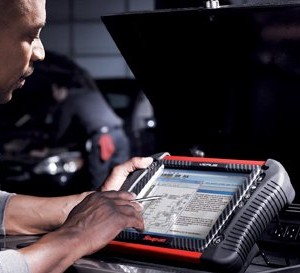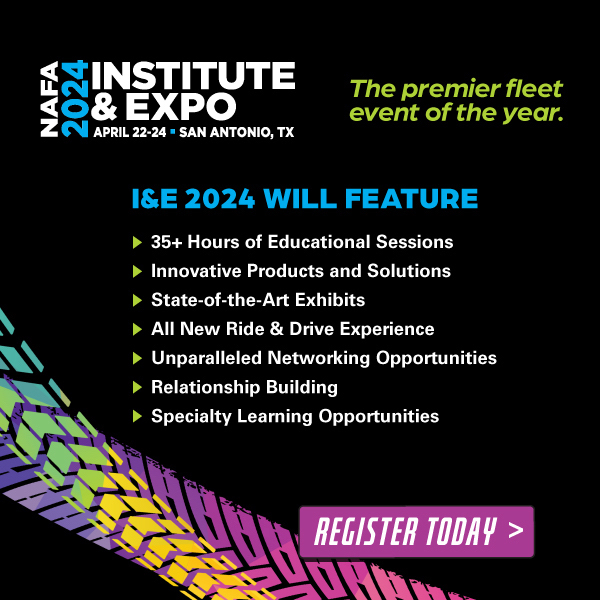
By Frank Terlep, Vice President of ADAS Services for Opus IVS
March 28, 2023
In a recent survey, the Insurance Institute for Highway Safety (IIHS) found that owners of vehicles equipped with front crash prevention, blind spot detection or rearview or other visibility-enhancing cameras, still had issues with the features even after the initial repair job was completed.
As nearly 500 drivers surveyed had repairs to their front crash prevention, blind spot detection or driver-assistance cameras more than once[1], post-repair problems with the technology were substantially more common, which implies servicers and repairers are still struggling with the calibration process. Additionally, earlier research from the Automotive Aftermarket Suppliers Association (AASA), now known as the Motor & Equipment Manufacturers Association (MENA), found that only 28% of collision shops perform just some Advanced Driver Assistance System (ADAS) repairs, which shows more education is needed to ensure these technologies are repaired properly[2].
 Between utilizing the right original equipment manufacturer (OEM) diagnostic technology and having the proper training, technicians simply need better crash avoidance technology repair processes in place before handing the vehicle back to the owner. However, with the automotive industry behind the curve in this area, the lack of standardization remains and is a growing problem for the industry.
Between utilizing the right original equipment manufacturer (OEM) diagnostic technology and having the proper training, technicians simply need better crash avoidance technology repair processes in place before handing the vehicle back to the owner. However, with the automotive industry behind the curve in this area, the lack of standardization remains and is a growing problem for the industry.
Lack of Standardization
There’s no denying that identifying, recruiting, and retaining qualified repair technicians is difficult today, but the standardization of how vehicles are repaired properly, especially with crash avoidance technology, is simply not there. Sure, all of the OEMs believe their specific crash avoidance technologies are their “secret sauce” or differentiator in the market when consumers are shopping for a vehicle, however, the OEMs all have different software platforms which complicates the calibration process at repair shops.
The software talking to the sensors on the vehicle, such as the camera sensors, radar sensors, parking sensors, etc., require different processes to calibrate the vehicles, which ultimately means different methodologies have been created by technicians to calibrate the vehicle. With current low volumes of ADAS repairs, especially in the mechanical channel, 57% of collision and repair shops don’t even have a dedicated bay for ADAS calibrations, which had led to high levels of frustration[3]. As a result, technicians need OEM quality diagnostic technologies to increase the ease of calibration, while providing assurance back to the owner of the vehicle that the vehicle was properly fixed, whether it’s for smaller collision and repair shops, or larger dealerships.
The Right Equipment & Processes Needed
A typical scenario that occurs with technicians repairing these crash avoidance technologies is they will get done with the repair, scan the vehicle with a diagnostic scanner, look up the Diagnostic Trouble Code (DTC), and then think the vehicle is completely calibrated and ready to drive. However, that is not necessarily the case. With more than 90% of current ADAS services coming into an aftermarket mechanical shop not being performed by the shop[4], ADAS calibration and servicing needs more training, in which these repairs should be performed with OEM-certified diagnostic and remote service equipment.
 As roughly 40 percent to 50 percent of vehicles today have crash avoidance technology already implemented, the OEM-certified technologies today will provide all ADAS information to the technician inbounding the specific vehicle. For example, these diagnostic and remote service tools can speed up the repair process, in which it can be as simple as scanning the Vehicle Identification Number (VIN) on the vehicle through a smart device to tell the technician exactly what technology is on the vehicle and the particular processes to properly repair those technologies.
As roughly 40 percent to 50 percent of vehicles today have crash avoidance technology already implemented, the OEM-certified technologies today will provide all ADAS information to the technician inbounding the specific vehicle. For example, these diagnostic and remote service tools can speed up the repair process, in which it can be as simple as scanning the Vehicle Identification Number (VIN) on the vehicle through a smart device to tell the technician exactly what technology is on the vehicle and the particular processes to properly repair those technologies.
Whether it’s implementing vehicle checklists, specific calibration processes, or inspection processes, having the right procedures in place to ensure the repair job was actually completed is significant. By following specific OEM’s repair procedures and taking the vehicle for a “test drive” after the repair is complete, the calibration process can be performed correctly, while ensuring the vehicle operates smoothly and efficiently.
Attitude of Vehicle Repair Today
Just as the proper training and overall knowledge of the crash avoidance technology in a vehicle is important, the automotive and vehicle repair industries are now starting to see major efforts toward training in-house staff how to perform proper calibrations, especially as more vehicles become equipped with ADAS services.
One trend that the industry might start to see with addressing vehicle repair is the creation of a new segment geared toward ADAS service and calibration simply because of the training, equipment, space, and knowledge these technologies require. As an example, 80% of the repair and the collision centers today don’t have the space to properly perform the calibrations.
ADAS technologies affect the overall safety of the vehicle in terms of accelerating, braking, and steering and unless the vehicle has been driven on the road after repair, it can be difficult to tell if the vehicle is repaired properly. Whether its identifying if the vehicle can straighten out after turning, if the sensors can determine the speed limit signs, or if the blind spot indicators are working properly when using turn signals, all of these repairs need to be validated and standardized with the right OEM-certified diagnostic and remote service tools so that the automotive industry can continue to thoroughly repair crash avoidance vehicle technologies.
 About The Author: Frank Terlep is the Vice President of ADAS Services for Opus IVS, a global diagnostics, ADAS calibration, programming, and remote services leader that is innovating the future of safe, complex vehicle repair. For more information on Opus IVS, please visit www.opusivs.com.
About The Author: Frank Terlep is the Vice President of ADAS Services for Opus IVS, a global diagnostics, ADAS calibration, programming, and remote services leader that is innovating the future of safe, complex vehicle repair. For more information on Opus IVS, please visit www.opusivs.com.
Footnotes:
[1] https://www.motor.com/2023/02/crash-avoidance-features-improve-safety-but-complicate-repairs/?utm_source=rss&utm_medium=rss&utm_campaign=crash-avoidance-features-improve-safety-but-complicate-repairs&mc_cid=def87ba26e&mc_eid=63163cf15d
[2] Motor & Equipment Manufacturers Association ADAS Aftermarket Service Ecosystem 2030 Executive Brief; February 2022
[3] Motor & Equipment Manufacturers Association ADAS Aftermarket Service Ecosystem 2030 Executive Brief; February 2022
[4] Motor & Equipment Manufacturers Association ADAS Aftermarket Service Ecosystem 2030 Executive Brief; February 2022



